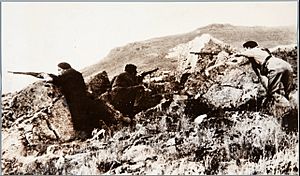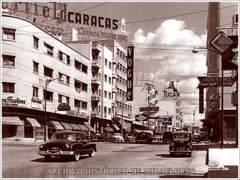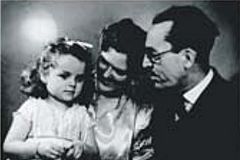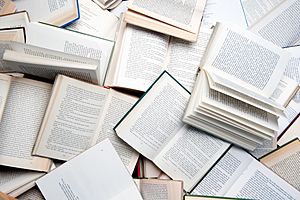Segismundo Casado facts for kids
Quick facts for kids
Segismundo Casado López
|
|
|---|---|
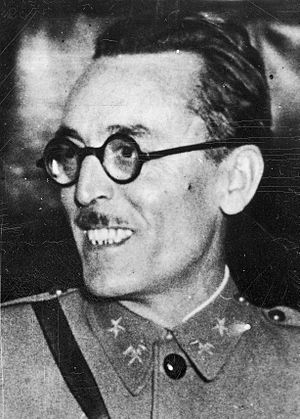 |
|
| Birth name | Segismundo Casado López |
| Born | 10 October 1893 Nava de la Asunción, Segovia, Spain |
| Died | 18 December 1968 (aged 75) Madrid, Spain |
| Allegiance | |
| Service/ |
|
| Rank | Colonel |
| Commands held | Commander of an Army Corps (1938), Commander of the Army of the Centre (1939) |
| Battles/wars | Spanish Civil War |
| Signature |  |
Segismundo Casado López (born October 10, 1893 – died December 18, 1968) was an important officer in the Spanish Army. He served during a few different periods in Spanish history, including the time of the Second Spanish Republic.
When the Spanish Civil War began, he chose to support the Republicans. He slowly became a high-ranking commander, leading the Army of the Centre. Casado is most known for leading a special action against the government of Juan Negrín in March 1939. He believed this action would stop a Communist takeover and end the war, which he felt was already lost.
After his group took control of the Republican area, Casado served as the minister of defense. However, talks with the other side, the Nationalists, did not work out. Casado then went to live in other countries, first in Britain and later in Latin America. He returned to Spain in 1961.
Contents
Segismundo Casado's Military Journey
There are different stories about Casado's parents. He said they were farmers who worked very hard. He also said he had a tough childhood and youth. But other sources say his father was actually an army captain.
Starting as a Young Officer
In 1907, when he was a teenager, Casado joined the Cavalry Academy in Valladolid. He finished his training in 1911 and became a segundo teniente (second lieutenant). He moved to different army units and continued his studies.
In 1913, he was promoted to teniente primero (first lieutenant). He took many courses to improve his military skills. In 1917, his regiment helped keep order during a big strike. In 1918, Casado entered a higher military school. He became a captain in 1919.
In 1921, Casado was sent to Larache in Spanish Morocco. He led a machine-gun unit that protected supplies. His commanders thought he was very good at his job. After about six months, he returned from Morocco.
In 1923, Casado earned a special diploma for the General Staff, which meant he was trained for high-level planning roles. He continued to serve in different military posts. In 1929, he was promoted to comandante (major). He also became a professor at a military school. Casado said he was against the government of Miguel Primo de Rivera. Records show he even defended some officers in court who were accused of rebellion.
Becoming a Senior Officer
When the Second Spanish Republic began, some military promotions were reviewed. Casado's promotion to major was temporarily changed back. He kept working at the military school. He also wrote studies about military tactics. Some people say he was a strong supporter of using armored vehicles instead of cavalry.
In 1935, Casado was chosen to lead the personal guard of the president, Niceto Alcalá-Zamora. He continued this role for the next president, Manuel Azaña, in 1936.
During the Spanish coup of July 1936, which started the Civil War, Casado helped move President Azaña to safety. He then served in the Sierra de Guadarrama mountains. In October 1936, he was called back to Madrid and became head of operations for the General Staff. He was also promoted to teniente coronel (lieutenant colonel).
Casado was involved in organizing new army units and teaching. He became the head of a military school. In 1937, he was made general inspector of the cavalry. He later commanded two different Army Corps, fighting in Aragon. In 1938, he became commander of the Army of the Centre in Madrid. He was promoted to coronel (colonel) in May 1938 and to general in February 1939.
The March 1939 Coup

By 1938, Casado started to doubt the prime minister, Juan Negrín's, plan to keep fighting the war. He believed the war was already lost. He thought continuing to fight would only cause more deaths and destruction. He blamed the Communists for wanting to prolong the war for their own reasons.
In late 1938, Casado began talking with politicians about opposing Negrín. In early 1939, he secretly started peace talks with the Nationalists. By February, a plan was ready. Casado was the leader, supported by most military commanders, the Anarchists, and the Socialists.
On March 5, 1939, Casado's group announced the creation of the Consejo Nacional de Defensa (CND). This council claimed to have all power in the Republican zone. They said it was to stop a Communist takeover. Casado was the main person behind the CND. He refused to back down when he spoke with Negrín. He briefly led the CND but then gave the role to General Miaja and became the defense counselor. The CND fought against Communist-loyal units in Madrid until March 11. After the CND took full control, Casado was involved in some legal actions against Communist leaders.
Casado and the CND continued talks with the Nationalists. He wanted to arrange a surrender that would allow people to leave Spain safely and prevent harsh punishments. But the Nationalists demanded a full and unconditional surrender. Casado realized further talks were useless. On March 26, the CND ordered their troops not to resist the Nationalist advance. On March 28, Casado flew from Madrid to Valencia. He tried to arrange ships for people to escape. On March 29, Casado boarded a British warship in Gandia, leaving Spain early on March 30.
Life After the War: Exile and Return
Casado was taken to Marseille and then traveled to the United Kingdom. He received money from a British group that helped Spanish refugees. He even got a job at the BBC, where he talked about military topics using a fake name. He also wrote a book called The Last Days of Madrid.
Later, Casado started working for Nestlé, a big food company. In 1947, he moved to Colombia to work for their company there. He hoped that after World War II, the British might help bring down the Franco government in Spain and that he could return. In 1949, he moved to Venezuela to work for another Nestlé company. He spent 12 years there, traveling as a sales representative. As he got older and had health problems, the work became harder.
In 1961, Casado returned to Spain. He settled in Madrid. Even though he had been sentenced to prison in 1944 for rebellion, he was not bothered at first. However, his Nestlé pension was not enough. In 1962, he asked for a military pension. This led to an investigation into his role in the Republican army. Eventually, the charges against him were dropped, but he was briefly kept under house arrest. In 1966, he had a small heart attack. To earn more money, he republished his book, The Last Days, in Spanish in 1967.
His Personal Life
In 1920, Casado married María de las Mercedes de la Calle Condado. This marriage did not last, and they did not have children. Later, in the 1930s, Casado married María del Carmen Santodomingo de Vega (1911-1976). They had two children, Carmen and Segismundo Casado Santodomingo.
When Casado left Spain in 1939, his wife and children stayed behind. They tried to get passports to leave, but they were not allowed. Casado tried to help them leave, but it didn't work.
In the early 1940s, Casado lived with an Englishwoman named Norah Purcell. They had a daughter, María Cristina, who sadly passed away in 1946. Their relationship ended when Casado left for Latin America. In 1951, his wife and two children joined him in Venezuela. However, they found they were "totally incompatible," and his wife later returned to Spain. His children stayed in Venezuela.
Casado had a brother named César, who was also a cavalry officer. Both brothers rose through the military ranks at similar times. César was connected to an Anarchist trade union. During the Civil War, César also supported the Republicans. However, the brothers had a disagreement, and Segismundo later told his children not to accept any money from César.
What Were His Beliefs?
Casado's political beliefs are not fully clear, but he was definitely on the Left side of politics. He often spoke about his poor childhood, which he said made him care about social fairness. This might seem unusual for someone joining the army, which was seen as a strong part of the old government.
He did not like the Primo de Rivera dictatorship. He even defended other officers who were accused of plotting against the government. He was loyal to the Second Spanish Republic after the coup in 1936. Some historians say he started to dislike the Communists in late 1936, feeling they were holding him back. He was not known to be close to Anarchism or Socialism. Some authors believe he shared similar political ideas with President Azaña, which suggests he was a strong supporter of the Republic.
In his writings, Casado presented himself as someone who wanted to fight for democracy, freedom, and social justice against any type of dictatorship, whether Communist or Francoist. It is not known if he was Catholic. He joined freemasonry in the 1920s, which was a group that believed in freedom and progress.
How History Remembers Him
In Spain under Franco's rule, Casado was not often talked about. If he was mentioned, it was usually as someone who stopped a Communist takeover. This idea was also repeated by some historians. In the 1960s, historian Hugh Thomas described Casado as well-meaning, even if he made some mistakes. Casado's book, Asi cayo Madrid, was generally well-received. Newspapers after his death sometimes said he prevented a Communist coup.
Since the 1980s, many scholars have concluded that there was no Communist coup planned. This changed how people viewed Casado's actions in 1939. Instead of seeing it as stopping Communists, some started to see it as a coup against the legal government. Historians began to focus more on Casado's personal reasons, like ambition.
Today, on social media, opinions about Casado vary widely. Some call him a traitor, while others see him as a hero. In history books, the 1939 coup is often seen not as a way to stop more deaths, but as a mistake that helped Franco's dictatorship win. A historian named Paul Preston wrote in 2016 that Casado was too ambitious and caused a huge disaster. However, in 2018, another author, Pedro López Ortega, wrote a book saying Casado showed realism and care for people against the foolishness of others.
In his hometown, Nava de la Asunción, there used to be a street named after Casado, but it has been renamed. In 1976, a play was written about the 1939 coup, featuring Franco and Casado. Casado has also appeared as a character in some Spanish novels.
See also
 In Spanish: Segismundo Casado para niños
In Spanish: Segismundo Casado para niños



